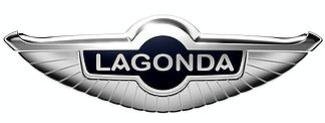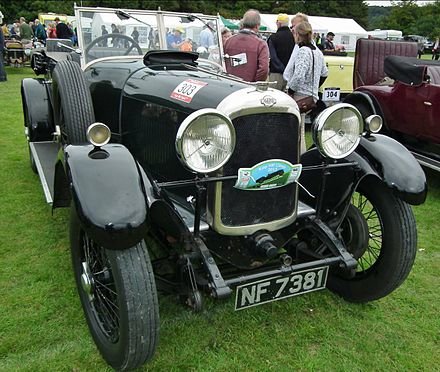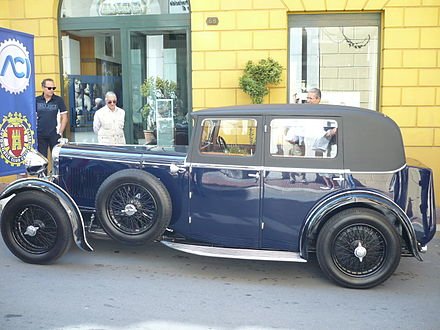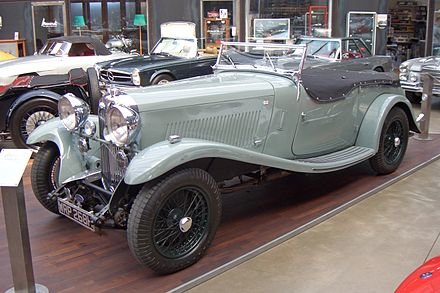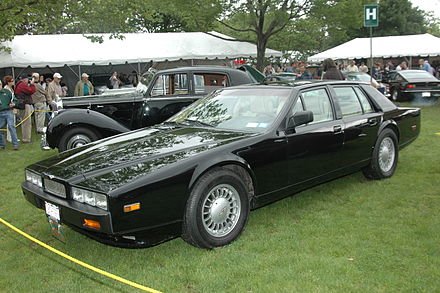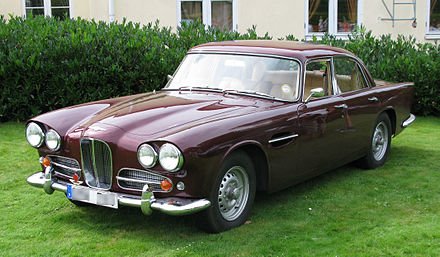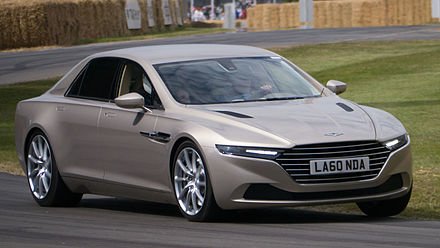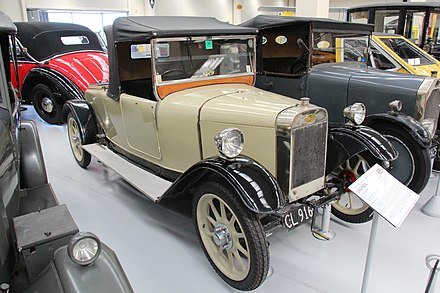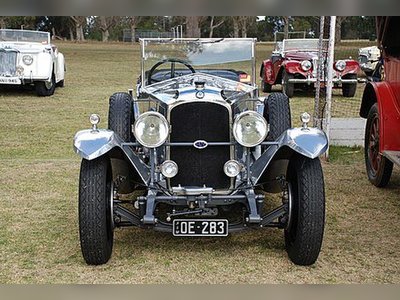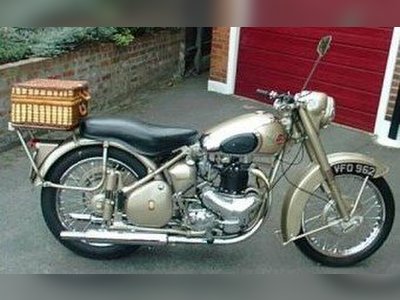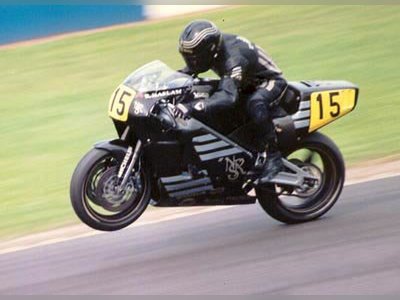British Heritage
Remember, Cherish, Learn.
beta
Lagonda
A Symbol of British Automotive Heritage.
Lagonda, a beacon of British luxury automotive design, was established in 1906 and remains a name synonymous with innovation, style, and performance. Its legacy, marked by periods of dormant commercial existence, yet punctuated by moments of exceptional ingenuity, makes Lagonda a unique contributor to British heritage.
Wilbur Gunn, an American opera singer turned British national, founded Lagonda in Staines, Middlesex, UK. The company, named after a Shawnee settlement in Gunn's birthplace of Springfield, Ohio, began its journey in the domestic tranquility of Gunn's garden. Gunn's early success in motorcycle production, including a win in the 1905 London–Edinburgh trial, paved the way for the creation of the first Lagonda car, the 20 hp, six-cylinder Torpedo, in 1907.
The Torpedo was the catalyst for Lagonda's growth, securing a victory in the 1910 Moscow–St. Petersburg trial, resulting in a flourishing export business to Russia. These victories on the international stage elevated the Lagonda name to new heights and highlighted the brand's commitment to innovative design and engineering.
In 1913, Lagonda unveiled the 11.1, a small yet advanced car equipped with a four-cylinder 1,099 cc engine. The 11.1 was groundbreaking, featuring a rivetted unibody body and the world's first-ever fly-off handbrake. The introduction of such a unique braking mechanism, designed to offer the driver enhanced control over the vehicle, cemented Lagonda's position as a leader in automotive design.
During World War I, Lagonda shifted gears from vehicle production to supporting the war effort, producing artillery shells. This period marked an interruption in the company's automotive advancements but showcased its capability to adapt to challenging circumstances.
The interwar period saw Lagonda return to its automotive roots, expanding its vehicle lineup. Among these was the 14/60, a sports model introduced in 1925, and the luxurious 4.5-litre M45 in the 1930s, a near 100 mph (160 km/h) car that achieved a controversial Le Mans victory in 1935.
Lagonda faced financial difficulties in the mid-1930s, but was rescued by Alan P. Good, who outbid Rolls-Royce to acquire the company. He convinced W. O. Bentley, the renowned designer, to join Lagonda. Under Bentley's design direction, the 4.5-litre range became the LG45, with models featuring lower but heavier bodies. Bentley's masterpiece, the V-12, launched in 1937, was a powerful 4,480 cc engine capable of going from 7 to 105 mph (11 to 169 km/h) in top gear and revving to 5,000 rpm, solidifying Lagonda's reputation for engineering prowess.
In 1947, David Brown acquired Lagonda, merging it with Aston Martin. This ushered in a new era for Lagonda, with the introduction of the 1948 2.6-litre, the first prototype developed under Aston Martin's ownership. The car's 2,580 cc twin overhead cam straight-six became the foundation for Aston Martin engines of the 1950s.
The decades that followed witnessed the resurrection of the Lagonda name multiple times, most notably in the form of the Aston Martin Lagonda, a large, futuristic, wedge-shaped car designed by William Towns, which was produced from 1976 until 1990.
The turn of the century saw a revitalization of the Lagonda brand. In 2009, to celebrate its centennial anniversary, Aston Martin announced plans to relaunch Lagonda to help it expand into new markets such as luxury saloons. The brand was officially revived in 2011 with a primary focus on high-end SUVs.
The latest addition to the Lagonda lineup is the Taraf, a £1 million saloon car powered by a Normally Aspirated V12 engine, introduced in 2014. Limited to just 200 units, it's available in the UK and US markets, further emphasizing Lagonda's commitment to producing exclusive, high-performance vehicles.
Lagonda's presence isn't confined to roads or racing tracks; it has made its way into popular culture. In Alfred Hitchcock's thriller "Suspicion" (1941), a Lagonda car is driven by characters portrayed by Hollywood legends Joan Fontaine and Cary Grant, providing a glimpse of the brand's appeal and grandeur.
The rise, fall, and resurrection of Lagonda serve as a testament to the brand's resilience and determination to push boundaries in automotive design. From its roots in a small garden in Staines to its modern incarnation under Aston Martin's wing, Lagonda has left an indelible mark on the British automotive landscape. Its iconic designs, engineering advancements, and role in popular culture have enriched British heritage and contributed to the prestige of British automotive manufacturing.
The future looks promising for Lagonda, with its legacy of innovation continuing to influence the trajectory of the luxury vehicle industry. As it navigates the twists and turns of the 21st century, Lagonda stands as a symbol of British ingenuity, elegance, and performance, carving its path while upholding the principles that defined its past.
The Birth of Lagonda
Wilbur Gunn, an American opera singer turned British national, founded Lagonda in Staines, Middlesex, UK. The company, named after a Shawnee settlement in Gunn's birthplace of Springfield, Ohio, began its journey in the domestic tranquility of Gunn's garden. Gunn's early success in motorcycle production, including a win in the 1905 London–Edinburgh trial, paved the way for the creation of the first Lagonda car, the 20 hp, six-cylinder Torpedo, in 1907.
The Torpedo was the catalyst for Lagonda's growth, securing a victory in the 1910 Moscow–St. Petersburg trial, resulting in a flourishing export business to Russia. These victories on the international stage elevated the Lagonda name to new heights and highlighted the brand's commitment to innovative design and engineering.
Lagonda's Contribution to Automotive Design
In 1913, Lagonda unveiled the 11.1, a small yet advanced car equipped with a four-cylinder 1,099 cc engine. The 11.1 was groundbreaking, featuring a rivetted unibody body and the world's first-ever fly-off handbrake. The introduction of such a unique braking mechanism, designed to offer the driver enhanced control over the vehicle, cemented Lagonda's position as a leader in automotive design.
During World War I, Lagonda shifted gears from vehicle production to supporting the war effort, producing artillery shells. This period marked an interruption in the company's automotive advancements but showcased its capability to adapt to challenging circumstances.
Post-War Revival and Bentley Influence
The interwar period saw Lagonda return to its automotive roots, expanding its vehicle lineup. Among these was the 14/60, a sports model introduced in 1925, and the luxurious 4.5-litre M45 in the 1930s, a near 100 mph (160 km/h) car that achieved a controversial Le Mans victory in 1935.
Lagonda faced financial difficulties in the mid-1930s, but was rescued by Alan P. Good, who outbid Rolls-Royce to acquire the company. He convinced W. O. Bentley, the renowned designer, to join Lagonda. Under Bentley's design direction, the 4.5-litre range became the LG45, with models featuring lower but heavier bodies. Bentley's masterpiece, the V-12, launched in 1937, was a powerful 4,480 cc engine capable of going from 7 to 105 mph (11 to 169 km/h) in top gear and revving to 5,000 rpm, solidifying Lagonda's reputation for engineering prowess.
A New Chapter: Aston Martin Ownership
In 1947, David Brown acquired Lagonda, merging it with Aston Martin. This ushered in a new era for Lagonda, with the introduction of the 1948 2.6-litre, the first prototype developed under Aston Martin's ownership. The car's 2,580 cc twin overhead cam straight-six became the foundation for Aston Martin engines of the 1950s.
The decades that followed witnessed the resurrection of the Lagonda name multiple times, most notably in the form of the Aston Martin Lagonda, a large, futuristic, wedge-shaped car designed by William Towns, which was produced from 1976 until 1990.
The turn of the century saw a revitalization of the Lagonda brand. In 2009, to celebrate its centennial anniversary, Aston Martin announced plans to relaunch Lagonda to help it expand into new markets such as luxury saloons. The brand was officially revived in 2011 with a primary focus on high-end SUVs.
Lagonda in Modern Times and Popular Culture
The latest addition to the Lagonda lineup is the Taraf, a £1 million saloon car powered by a Normally Aspirated V12 engine, introduced in 2014. Limited to just 200 units, it's available in the UK and US markets, further emphasizing Lagonda's commitment to producing exclusive, high-performance vehicles.
Lagonda's presence isn't confined to roads or racing tracks; it has made its way into popular culture. In Alfred Hitchcock's thriller "Suspicion" (1941), a Lagonda car is driven by characters portrayed by Hollywood legends Joan Fontaine and Cary Grant, providing a glimpse of the brand's appeal and grandeur.
The Legacy of Lagonda
The rise, fall, and resurrection of Lagonda serve as a testament to the brand's resilience and determination to push boundaries in automotive design. From its roots in a small garden in Staines to its modern incarnation under Aston Martin's wing, Lagonda has left an indelible mark on the British automotive landscape. Its iconic designs, engineering advancements, and role in popular culture have enriched British heritage and contributed to the prestige of British automotive manufacturing.
The future looks promising for Lagonda, with its legacy of innovation continuing to influence the trajectory of the luxury vehicle industry. As it navigates the twists and turns of the 21st century, Lagonda stands as a symbol of British ingenuity, elegance, and performance, carving its path while upholding the principles that defined its past.
- Lagondaen.wikipedia.org

